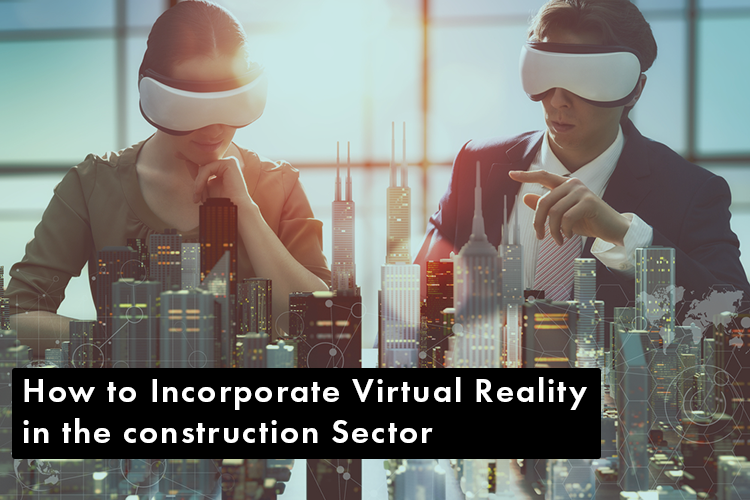How to Incorporate Virtual Reality in the construction Sector

Virtual Reality can be defined as a computer generated simulation of a 3D image or an environment that can be interacted with in a seemingly real or a physical manner by an individual who is using the requisite special electronic equipment. The mainstream application of virtual reality techniques has been for the most part perceived as a beneficial tool for the gaming and automotive industry. However, the last decade has seen exponential growth in the virtual reality techniques and the construction sector has been the latest industry to take the plunge and incorporate virtual reality techniques in its applications.
In the construction industry 3D modeling software has benefited the construction sector by making it possible to not just create a detailed, precise model but one which can be shared easily across all the stakeholders. VR takes this to the next level, enabling the people to immerse themselves in the project as if they were physically present and interact with the environment. By using the modern VR technologies estate developers, designers and architects can take them on a virtual tour, create more accurate plans of a client’s demands and increase the safety of the workers. Below we look at the benefits of using virtual technology in the construction sector:
1. Design and Pitching:
Schematics and concept rendering can be used to present the final design however it would be more beneficial to use immersive walkthroughs to present the design to the client or the investor. This enables clients to easily and accurately understand scale and potential of the design. Combined with Architectural BIM Services it also allows the user to move around in a virtual environment, change textures, change the position of the furniture etc. in order to try and visualize more options before choosing one. Visualizing the end design empowers the client to make informed decisions and also improves the contractor’s ability to set and meet expectations. Virtual Reality can be used not just to model the interiors of the building but also of its surroundings which can help the government officials get an idea of how the building will look and affect the city planning.
2. Increased Collaboration:
Virtual Reality makes it possible for the teams to see a project site without actually travelling to it. This enables the teams to collaborate in a shared environment in real time where they can spot details, detect issues and make immediate decisions. The benefits become even more prominent when the building is in remote site and the team has to communicate across substantial distances. Combining VR technologies and 3D camera, it is possible to stream a 360-degree video in real time and also take virtual site tours so that the construction process is monitored. Working in association with BIM Modeling Services, the project manager can then see whether everything is on track and check if the onsite progress is in accordance to the BIM model.
3. Optimizes Construction Process:
Virtual reality can be extremely helpful on-site during the construction process. VR can be used along with intelligent construction machinery to reduce labour costs especially for repetitive, manual tasks. For example, with VR site managers can preview calculations of work areas like how much earth needs to be removed in specific areas instead of placing operators and equipment on site and asking them to dig an area. It also allows the management to see the real-time conditions and adapt to changes as and when they occur. Thus AEC firms can better their construction phase, by allowing where it is possible to explore a 3D model in VR so that any issues and errors are spotted at an early stage and there is no re-work, waste of time and materials as well as reduces costs.
4. Increased Safety:
VR learning and micro learning apps can be used to train the laborers more effectively than ever before. Workers can be given quality training especially in high-risk environments so that they are more prepared and consequently less accident prone. The equipment operators especially require an intensive training, guidance and through understanding of the industry rules and regulations before they can operate machinery. VR enables to give them a virtual experience without having any real world consequences. It is thus cheaper, more valuable and safer to train the workers in a virtual environment.
Conclusion:
The construction companies are not yet using VR to its full capability only choosing to use it at a certain stages of the project. However, looking at the fact that VR has the potential to streamline the building design and construction, improve collaboration and boost the client’s satisfaction it is only a short while before virtual reality becomes a commonly used in the construction industry.